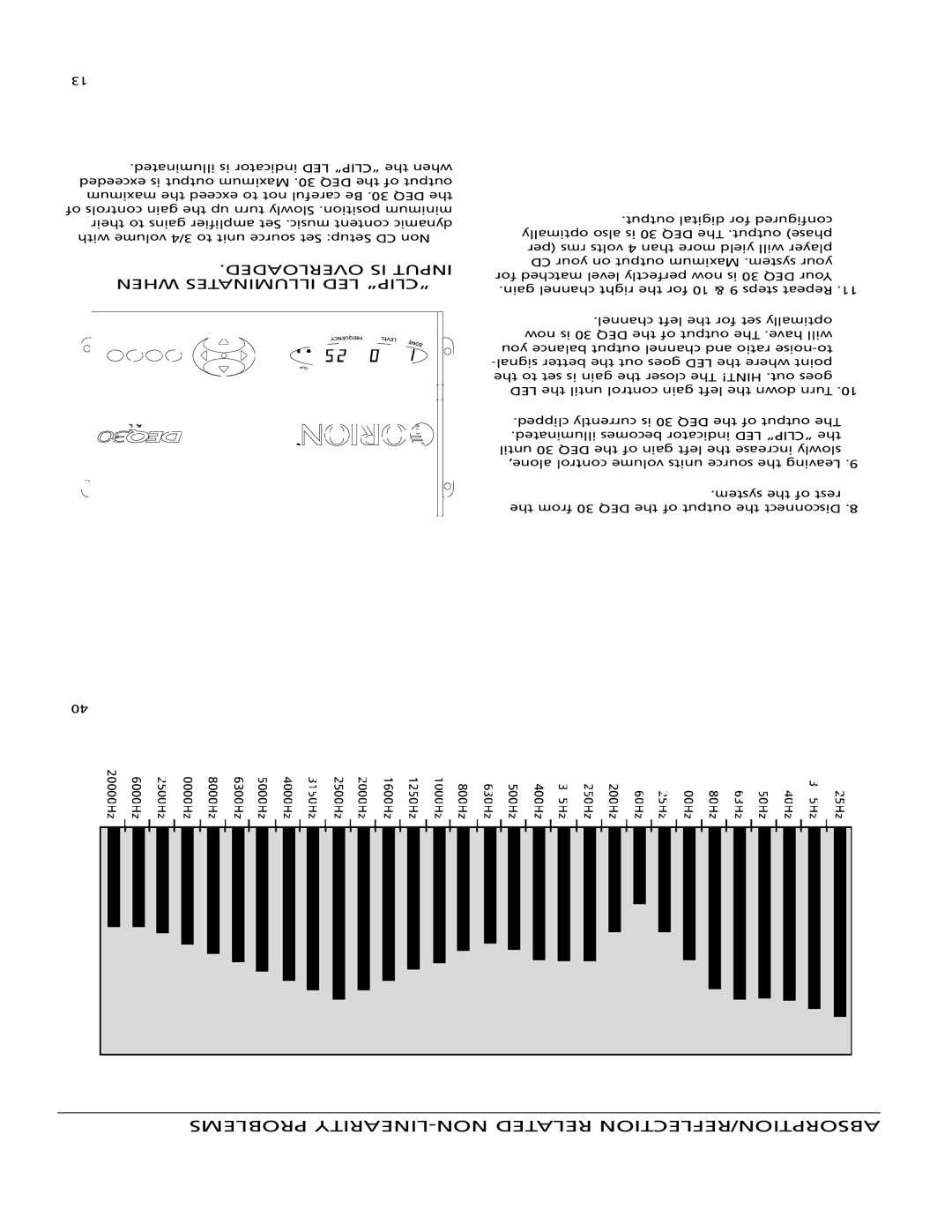
ABSORPTION/REFLECTION RELATED NON-LINEARITY PROBLEMS
25Hz | 31.5Hz | 40Hz | 50Hz | 63Hz | 80Hz | 100Hz | 125Hz | 160Hz | 200Hz | 250Hz | 315Hz | 400Hz | 500Hz | 630Hz | 800Hz | 1000Hz | 1250Hz | 1600Hz | 2000Hz | 2500Hz | 3150Hz | 4000Hz | 5000Hz | 6300Hz | 8000Hz | 10000Hz | 12500Hz | 16000Hz | 20000Hz |
40
8.Disconnect the output of the DEQ 30 from the rest of the system.
9.Leaving the source units volume control alone, slowly increase the left gain of the DEQ 30 until the “CLIP” LED indicator becomes illuminated. The output of the DEQ 30 is currently clipped.
10.Turn down the left gain control until the LED goes out. HINT! The closer the gain is set to the point where the LED goes out the better signal-
11.Repeat steps 9 & 10 for the right channel gain. Your DEQ 30 is now perfectly level matched for your system. Maximum output on your CD player will yield more than 4 volts rms (per phase) output. The DEQ 30 is also optimally configured for digital output.
”CLIP“ LED ILLUMINATES WHEN INPUT IS OVERLOADED.
Non CD Setup: Set source unit to 3/4 volume with dynamic content music. Set amplifier gains to their minimum position. Slowly turn up the gain controls of the DEQ 30. Be careful not to exceed the maximum output of the DEQ 30. Maximum output is exceeded when the “CLIP” LED indicator is illuminated.
13
